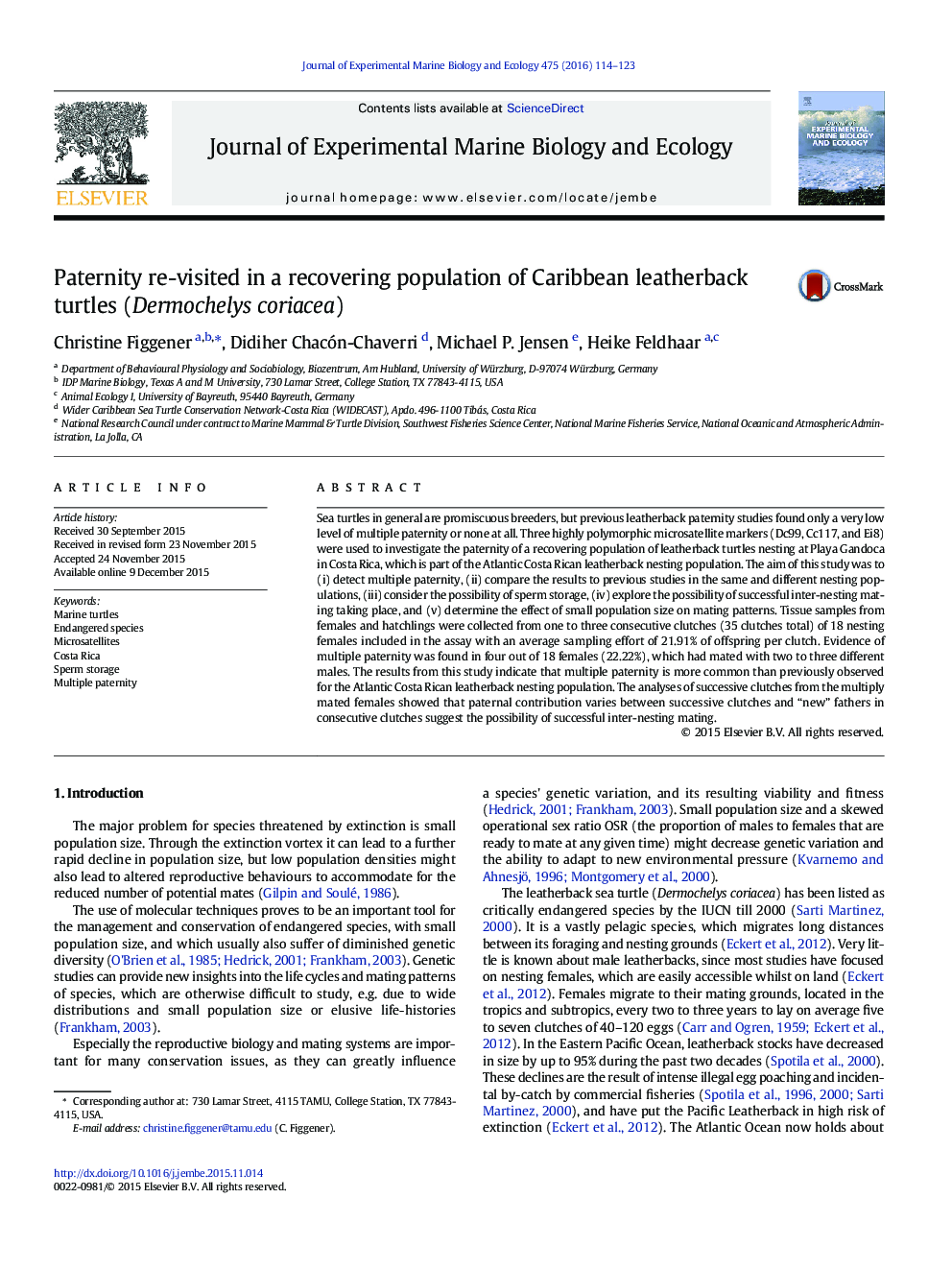| کد مقاله | کد نشریه | سال انتشار | مقاله انگلیسی | نسخه تمام متن |
|---|---|---|---|---|
| 4395286 | 1618400 | 2016 | 10 صفحه PDF | دانلود رایگان |

• Paternity of leatherback turtles was assessed using three microsatellite markers.
• Evidence for multiple paternity was found in 4 out of 18 females (22.22%).
• Levels of multiple paternity higher than found a decade ago in same population
• Bigger population sizes might lead to higher levels of multiple paternity.
• Data suggest possible successful inter-nesting mating.
Sea turtles in general are promiscuous breeders, but previous leatherback paternity studies found only a very low level of multiple paternity or none at all. Three highly polymorphic microsatellite markers (Dc99, Cc117, and Ei8) were used to investigate the paternity of a recovering population of leatherback turtles nesting at Playa Gandoca in Costa Rica, which is part of the Atlantic Costa Rican leatherback nesting population. The aim of this study was to (i) detect multiple paternity, (ii) compare the results to previous studies in the same and different nesting populations, (iii) consider the possibility of sperm storage, (iv) explore the possibility of successful inter-nesting mating taking place, and (v) determine the effect of small population size on mating patterns. Tissue samples from females and hatchlings were collected from one to three consecutive clutches (35 clutches total) of 18 nesting females included in the assay with an average sampling effort of 21.91% of offspring per clutch. Evidence of multiple paternity was found in four out of 18 females (22.22%), which had mated with two to three different males. The results from this study indicate that multiple paternity is more common than previously observed for the Atlantic Costa Rican leatherback nesting population. The analyses of successive clutches from the multiply mated females showed that paternal contribution varies between successive clutches and “new” fathers in consecutive clutches suggest the possibility of successful inter-nesting mating.
Journal: Journal of Experimental Marine Biology and Ecology - Volume 475, February 2016, Pages 114–123